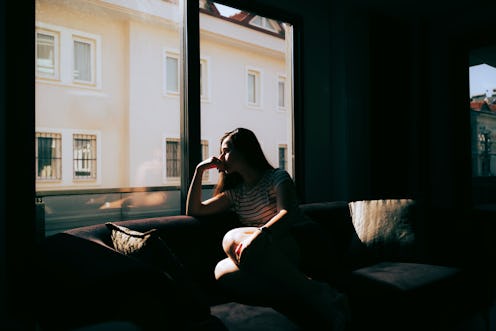Life
This Website Helps People With Intrusive Thoughts

We have all on occasion experienced an involuntary disturbing thought or violent image which leaves us upset and confused — these are called “intrusive thoughts.” Aaron Harvey, who battled these on his own for over 20 years, has launched an intrusive thoughts website to help people with OCD. According to the website, as many as four out of five people experience such thoughts. However, for some, the repetitive nature of these troubling thoughts may be a symptom of certain forms of Obsessive Compulsive Disorder.
Many try to ignore these thoughts and push them out of their head, but that can make them even worse and more frequent. Attempting to repress the thoughts instead of addressing them can lead to heightened anxiety and depression, questioning of one's character and abilities, creating isolating behavior. Often, those who are tormented by intrusive thoughts are too embarrassed or ashamed to share them or seek help. Intrusivethoughts.org delivers, through a stylish website, carefully curated facts and statistics, videos, information on different types of OCD symptoms and personal stories. It also elaborates on treatment through counseling, yoga, mindfulness and healthy eating techniques. Here, Aaron Harvey seeks to fill the void for an online community forum, which will help educate and provide support and treatment.
Aaron Harvey, a creative marketing entrepreneur, wrestled with these thoughts for over 20 years before being diagnosed. He began having intrusive thoughts when he was 13. “I started to have a lot of graphic violent images in my head that I couldn’t understand. It produced a lot of anxiety and led to panic attacks and constantly questioning my character," he told Refinery 29. "Any time I would try to escape them, they would get more violent and more graphic." This vicious cycle is common of many types of OCD. As it says on the website, "for 1 in 50 the fear becomes much harder to dismiss... These thoughts repeat over and over, faster and faster, making the fear we might act more real."
Aaron Harvey credits the essay "Pure OCD: a rude awakening" by Rose Bretécher with finally providing him with some relief and hope. His suicidal thoughts and anxiety had become unbearable, leading him to search for help online. After wading through immense amounts of psychological studies and treatments, Bretécher's article published in The Guardian was a breath of fresh air. It addressing the issue head on and with humor, “She forever changed, if not saved, my life,” Harvey told Market Wired.
Harvey saw the need for more approachable information on the disorder, and founded the not-for-profit Intrusive Thoughts, Inc. which launched the website as an "educational hub." The site is essentially built to appeal to his younger self. "My goal is to capture me when I was 13 and I started to experience this," he described to Refinery 29, "so that next 13-year-old doesn’t have to spend the next 20 years figuring out what the hell is going on and thinking that they’re a bad person."
"There was a clear opportunity to use my professional skills to create a resource with a youthful look and tone of voice that also humanized the experience of living with intrusive thoughts, promoted a holistic treatment plan and elevated conversations about mental health in the media,” Harvey said, commenting on the approachable and smart design of the website.
This important tool will provide relief to the many who suffer, and help them feel part of a greater community. Harvey hopes to create similar websites for all mental illnesses in the future.
Images: Getty Images (3)